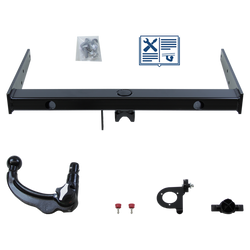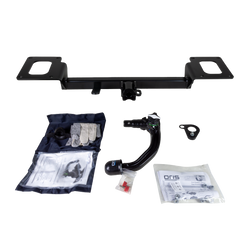According
Yes I understand the difference. But in EU the "tongue weight" usually is interpreted as "anything you can tighten on the round ball". No other car manufacturer has separate limit for bike rack.
That's interesting because in Europe the recommended tongue weight is 3-7%. I remember even in driving school they recommended to load the trailer so that the trailer is possible to lift to tow hook by hand; 90kg is already too heavy for that.
I was a big unclear in my original post. Tesla is trying to enforce the 54kg (120lbs) limit even in Europe. Owner's manual has the 54kg limit for bike racks, and 90kg (or 100kg in refresh) for tongue weight.
It's a bit weird..
Your statement appears to conflate maximum allowed tongue weight when hitched up to a trailer with maximum allowed vertical load with a bike rack attached. They are not the same thing. The forces involved are very different because the rack is entirely supported by the hitch and the trailer is primarily supported by its wheels.
Yes I understand the difference. But in EU the "tongue weight" usually is interpreted as "anything you can tighten on the round ball". No other car manufacturer has separate limit for bike rack.
I’m a bit puzzled about one thing; if EU regulations allow the X to tow a trailer up to 2250kg but do not allow the tongue weight to exceed 90kg, based on the widespread expert recommendation for tongue weight to be 10-15% of trailer weight that does not seem safe to me. If tongue weight is less than 10% of trailer weight there is a real risk of uncontrollable trailer sway.
That's interesting because in Europe the recommended tongue weight is 3-7%. I remember even in driving school they recommended to load the trailer so that the trailer is possible to lift to tow hook by hand; 90kg is already too heavy for that.
That “only difference” is to me the critical difference: as your photo makes clear, the US Bosal hitch design has a removable hitch receiver piece making the overall hitch two pieces whereas the EU hitch is a single piece with no “receiver”.
The US two piece design has an additional connection point such that the overall hitch flexes more under load. I suspect that is why the vertical load limit is lower.
I would like to emphasize that I am not an expert on the issue, I’m just trying to interpret and understand the information available to me as someone who tows a 2,000 lb trailer and uses a bike rack.
I was a big unclear in my original post. Tesla is trying to enforce the 54kg (120lbs) limit even in Europe. Owner's manual has the 54kg limit for bike racks, and 90kg (or 100kg in refresh) for tongue weight.
It's a bit weird..




